 Technology
Technology  Technology
Technology  Humans
Humans 10 Everyday Human Behaviors That Are Actually Survival Instincts
 Animals
Animals 10 Animals That Humiliated and Harmed Historical Leaders
 History
History 10 Most Influential Protests in Modern History
 Creepy
Creepy 10 More Representations of Death from Myth, Legend, and Folktale
 Technology
Technology 10 Scientific Breakthroughs of 2025 That’ll Change Everything
 Our World
Our World 10 Ways Icelandic Culture Makes Other Countries Look Boring
 Misconceptions
Misconceptions 10 Common Misconceptions About the Victorian Era
 Mysteries
Mysteries 10 Strange Unexplained Mysteries of 2025
 Miscellaneous
Miscellaneous 10 of History’s Most Bell-Ringing Finishing Moves
 Technology
Technology Top 10 Everyday Tech Buzzwords That Hide a Darker Past
 Humans
Humans 10 Everyday Human Behaviors That Are Actually Survival Instincts
 Animals
Animals 10 Animals That Humiliated and Harmed Historical Leaders
Who's Behind Listverse?

Jamie Frater
Head Editor
Jamie founded Listverse due to an insatiable desire to share fascinating, obscure, and bizarre facts. He has been a guest speaker on numerous national radio and television stations and is a five time published author.
More About Us History
History 10 Most Influential Protests in Modern History
 Creepy
Creepy 10 More Representations of Death from Myth, Legend, and Folktale
 Technology
Technology 10 Scientific Breakthroughs of 2025 That’ll Change Everything
 Our World
Our World 10 Ways Icelandic Culture Makes Other Countries Look Boring
 Misconceptions
Misconceptions 10 Common Misconceptions About the Victorian Era
 Mysteries
Mysteries 10 Strange Unexplained Mysteries of 2025
 Miscellaneous
Miscellaneous 10 of History’s Most Bell-Ringing Finishing Moves
10 British Kings You’ve Never Heard Of
Most of us can name a couple of British kings off the tops of our heads. Interested in English history? William the Conqueror and Henry VIII. Classic literature? The Scottish king Macbeth and Henry V (or at least, Shakespeare’s historically skewed versions of them). American history? George III, or as he’s more commonly known, “Mad King George.” And who hasn’t heard of Queen Victoria?
The kings and queens of Great Britain are probably the best-known royals in history. But there are still some British monarchs who achieved great things in their lifetimes but are almost unknown today. Here, we’re exploring the lives of 10 British monarchs you’ve never heard of.
10 King Louis
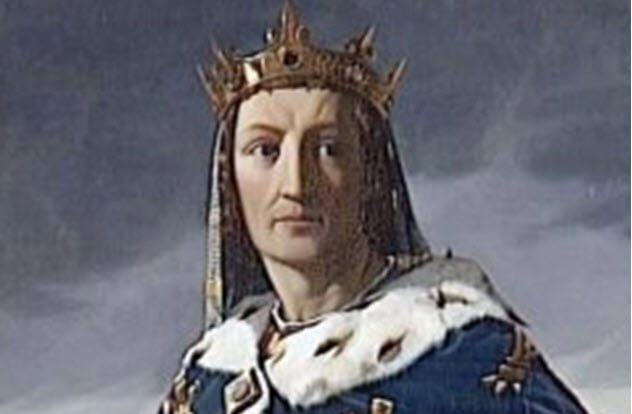
In May 1216, the heir to the French throne landed unopposed on the island of Thanet with a big army in tow. From there, he marched on London. Instead of rejecting the French king, the people of London opened the city’s gates and proclaimed him king of England in Old St. Paul’s Cathedral with many of the English nobles and even the king of Scotland watching. His claim to the throne was tenuous at best.[1]
The English nobility had grown sick of King John’s reign. They invited Louis to take the throne after it became clear that John had no intention of keeping the promise he’d made when he signed the Magna Carta the year before.
John abandoned London to Louis and then the old Anglo-Saxon capital of Winchester, which Louis had also seized by June. By midsummer, over half the kingdom belonged to him.
However, the momentum turned when John died of dysentery in October. Suddenly, the king of England was a nine-year-old Henry—a much smaller threat to baronial authority. His regent was William Marshal, one of the most respected men in England at the time. He was able to persuade the barons back from Louis’s side.
Though the odds were stacked against Louis, the war continued for another 12 months. In September 1217, after losing some key battles and having his supply lines cut, Louis was forced to sign the Treaty of Lambeth. In it, he agreed that he’d never return to England and that he’d never been the legitimate king of England. In return, he received 10,000 marks.
He became king of France in 1223.
9 King Kenneth I
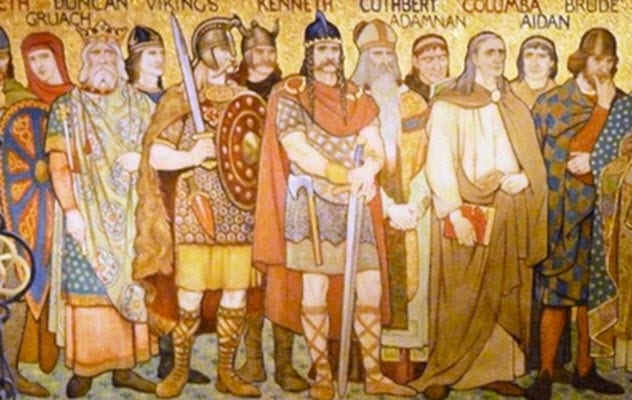
At the time of Kenneth’s birth around 810, modern-day Scotland was split between the Gaelic kingdom of Dalriada and the kingdom of the Picts. Pictland had been much stronger than Dalriada, but by the time Kenneth became king of Dalriada in 839, it was in the middle of a crisis. Five different claimants fought over the kingdom over the next decade, severely weakening it.
Around 848, Kenneth became king of the Picts and united Scotland under a single monarch for the first time. How exactly he became king is unknown. Among the various theories are that his mother was related to a Pictish claimant, that he was elected by the Picts, or that he seized the kingdom by force.
Kenneth faced some initial resistance from some of the Picts but was able to endure. His 10-year reign laid the foundations for a dynasty that lasted until 1034 and a state that has remained united until this day.[2]
He is mostly known for moving the administration of the Scottish kings inland to protect it from Viking attacks, which relocated the religious capital from Iona to Dunkeld. He was also the first Gaelic king of all Scotland. Not a single Pict became king of Scotland after his reign. Therefore, he started the process of Gaelicization that led to the disappearance of the Picts by 1100.
8 King Athelstan

Athelstan was elected king of Mercia in 924 following the death of his father, Edward. By late 925, he’d been elected king of Wessex, too, though not before he had to put down a rebellion.
With the might of the two greatest Anglo-Saxon kingdoms behind him, Athelstan finished what his grandfather Alfred the Great had started. In 927, Athelstan conquered the last Viking territory in England—the Kingdom of York—and became the first monarch in history to be king of all England.
He didn’t stop there. By 934, he’d also invaded Scotland and forced the Scottish king, Malcolm, to pay him homage. King Malcolm was unhappy with this arrangement and sided with the Vikings to invade northern England in 937.
The ensuing Battle of Burnanburh was a decisive victory for Athelstan and secured his position as the most powerful man in Britain for the rest of his lifetime. He called himself the king of Britain, and the Welsh and Scottish kings were forced to attend his council, where they witnessed and accepted his laws.[3]
Athelstan was a king who was actively involved in the government of the realm. More laws survive from his reign than any other 900s king. He centralized the Anglo-Saxon government and made efforts to reform the currency, but the majority of his legislation was aimed at tackling the rampant anarchism and robbery that dominated England at the time.
His council was the first in English history to regularly contain figures from across England rather than from just a single Anglo-Saxon kingdom. However, Athelstan himself rarely left Wessex. This way of governing, an early form of national assembly, did much to break down the regional barriers between the old kingdoms and to establish a common English identity.
7 King Edmund Ironside
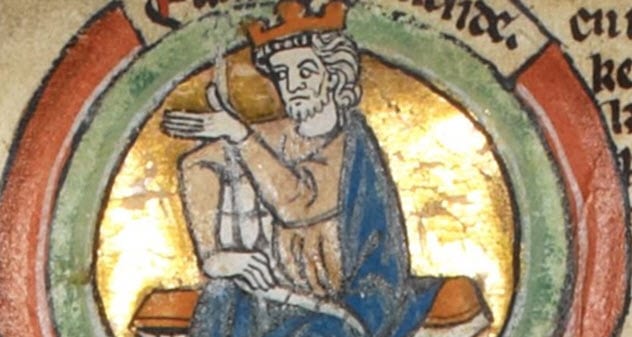
Edmund Ironside was never expected to be king. During a time of peace and stability in Anglo-Saxon England, he was third in line to the throne behind his two brothers. However, that changed when the Viking King Cnut invaded in 1015.
Many of the English earls turned their backs on King Aethelred and supported Cnut, but Edmund raised an army to resist them. He was betrayed by the English Earl Eadric Streona, leader of Mercia, who submitted to Cnut.
When his father failed to arrive to lead the army he’d raised, Edmund and Earl Uhtred of Northumbria took matters into their own hands and joined forces, raiding Eadric’s lands in retaliation for his betrayal. Cnut’s army landed in Northumbria and forced Uhtred to submit before killing him, leaving Edmund without any allies.
When Aethelred died in early 1016, Edmund made his way to London to be crowned the new king of England. Both of his brothers had died in 1014. In a final effort to halt the Danish invasion, he went to Wessex to raise an army. He fought the Danes at Penselwood and Sherston. Then he made his way to London where he successfully broke the Danish siege.
He pursued them to Brentford and won a decisive victory. His forces were depleted, however, and he retreated to Wessex to raise another army. By this time, Eadric and several other English earls had switched back to his side.
Edmund defeated the Danish army once again, this time at Otford, and chased Cnut’s retreating army into Kent. The momentum clearly appeared to be with him. Things changed, though, when he met the Danish army at Assandun.
Eadric, who was leading a portion of Edmund’s army, once again defected and retreated in the middle of the battle, leaving a hole in the English lines. Cnut quickly capitalized on this and won a devastating victory, putting an end to Edmund’s campaign. His reign came to an end with his death later that year. He’d been king for less than 12 months.[4]
6 King Edgar The Atheling
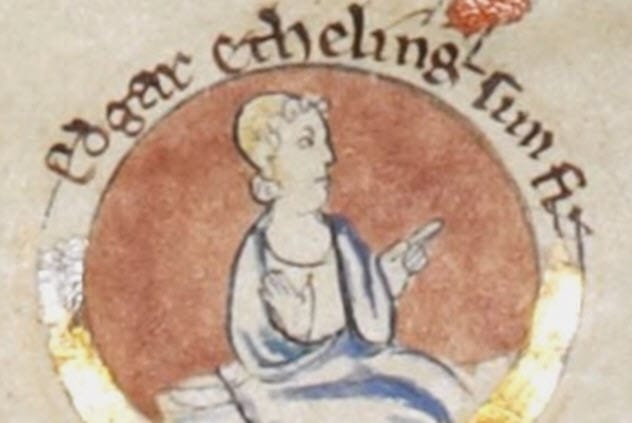
Edgar the Atheling was one of the shortest-reigning monarchs in British history. Part of the Anglo-Saxon resistance during William the Conqueror’s invasion, he was elected king by the royal council in London in October 1066. By December, he had sworn homage to King William and fled to Scotland in exile. So ended the reign of the last Anglo-Saxon king of England, barely two months after it had started.[5]
That wasn’t the end of his story, though. He returned to England in 1069 to lead a rebellion in Northumbria and joined forces with the Danes in 1070 when they invaded northern England, even seizing York in his name. The rebellion lasted for almost a year, with Edgar leading a guerrilla campaign from the Yorkshire marshes before eventually retreating to Scotland.
In 1074, the French King Philip offered him lands and a castle in northern France to harass William’s lands. Edgar accepted. But his ship from Scotland was caught in a storm, and he was shipwrecked on the English coast.
He and a handful of men barely escaped to Scotland with their lives. Seeing his attempts as futile, the Scottish king, Malcolm—who was also the husband of Edgar’s sister—convinced Edgar to give up his claim and return to England.
In 1093, Malcolm died. The kingdom should have gone to his son, Edgar (named after the Atheling), but instead it was seized by another noble. Edgar the Atheling had become quite powerful in England by this time. So he raised an army and led it north, driving out the pretender and installing his nephew on the Scottish throne.
5 King Robert II
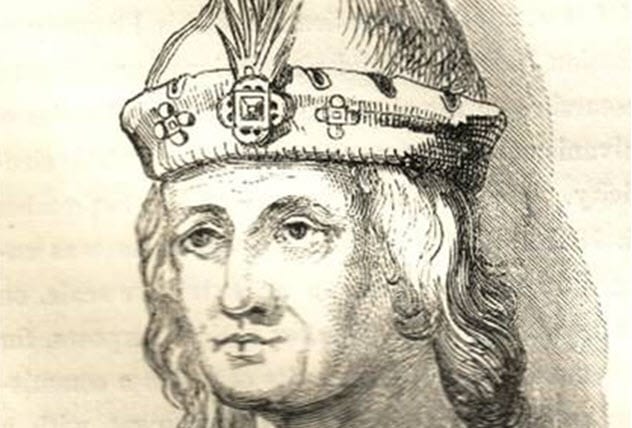
Robert II of Scotland was in his fifties when he became king of Scotland in 1371. He had been the heir presumptive for over 50 years. He was also the first king of the Stuart dynasty, which ruled Scotland until 1603 and then all of Britain until 1714.
By the time he became king, Robert was very experienced in the government of the realm and knew exactly how to twist it to his desires. While the last king had tried to dominate and suppress his nobles, Robert instead granted them more local powers and earned their goodwill. Rather than take their lands by force, he paid them significant amounts of money and then gave the lands to his sons.
By the end of Robert’s reign, over half the most powerful nobles in Scotland were Stuarts, all but ensuring their dominance of Scotland for the next few centuries. Unlike previous Scottish kings who’d spent most of their time courting their followers in lowland Scotland, Robert frequently toured the entire country with his court, engaging in diplomacy with his vassals and securing their support and respect.
His skills in diplomacy extended beyond the kingdom, too. Within weeks of being crowned, Robert formed the alliance with France that would be crucial to Scottish security in later centuries by defending them from English ambitions.
However, his wise, levelheaded approach to governance couldn’t last forever. When tensions began to rise once more between England and Scotland, Robert did everything he could to avoid war and alienated many of his supporters in the process.
Eventually, the royal council stripped him of a large portion of his royal power. They gave it to his son as lieutenant of Scotland, who promptly led the kingdom to war. Robert spent the rest of his reign as a figurehead king with little, if any, power.[6]
4 King Edgar The Peaceful
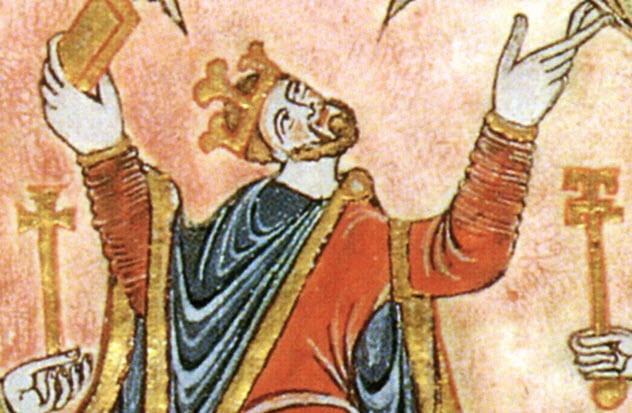
While Athelstan was the first actual king of England, it was Edgar the Peaceful who laid the foundations of a long-lasting, powerful realm. He worked tirelessly to centralize the power of the monarchy over the whole kingdom. He was also responsible for defining a system of weights and measures to be used across the kingdom. Although many kings had tried this, he was the first whose system was widely implemented and used.
His laws fundamentally shaped medieval England and would long be considered the standard which English people expected their kings to follow. When King Cnut invaded decades after Edgar’s death, Cnut swore that he would continue to uphold the laws of King Edgar.[7]
Edgar the Peaceful was also instrumental in the foundation of a modern, nationalized currency for England. Before his reign, coinage was produced on a regional basis. The average silver penny varied in size, weight, and stamp across the kingdom.
By the end of his reforms, the penny had a standardized size and was stamped with the same design at all the royal mints. Edgar’s currency reform dramatically increased the wealth of the English monarchs and allowed later Anglo-Saxon kings to keep the peace by paying money to the Vikings, preventing them from burning coastal settlements.
3 King William II ‘Rufus’
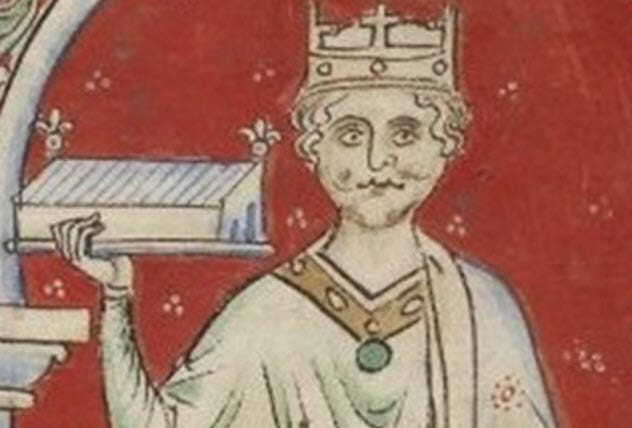
When William the Conqueror was dying of his wounds in 1087, he made the succession clear: His eldest son, Robert, was not to be king of England. Instead, he would be made duke of Normandy and the kingdom that William had built for 20 years would pass to his second surviving son.
Rufus—a nickname that supposedly referred to his ruddy complexion and possibly to his drunkenness or angry nature—was far from perfect as a king. But he was certainly a better choice than Robert, who’d once started a full-on rebellion because his younger brothers emptied a chamber pot over his head.
When William Rufus became king, Robert naturally disputed it. He launched a rebellion against Rufus, but the rebellion fell apart quickly when Robert failed to turn up.
Secure in his throne, Rufus ruled for 13 years. He was triumphant against the Scots, securing the border and taking Cumbria for the English throne, and he made lots of money for the royal coffers by levying high taxes on the realm.
He also profited from the free investiture rules (enacted by his father) by purposely leaving bishoprics empty, meaning their incomes automatically went to Rufus. However, this also deprived people of the religious leadership they wanted.
This act in particular seems to have earned him many enemies. Alongside the fact that he had never married, this may have led to the widespread anger and accusations of sodomy that many chroniclers (who were usually monks) threw at him in the years following his death.[8]
William Rufus was an unpopular king either way and was said to have been more interested in enjoying himself than governing the country properly. When he died in a hunting accident in 1100, very few people mourned his loss.
2 King Henry I
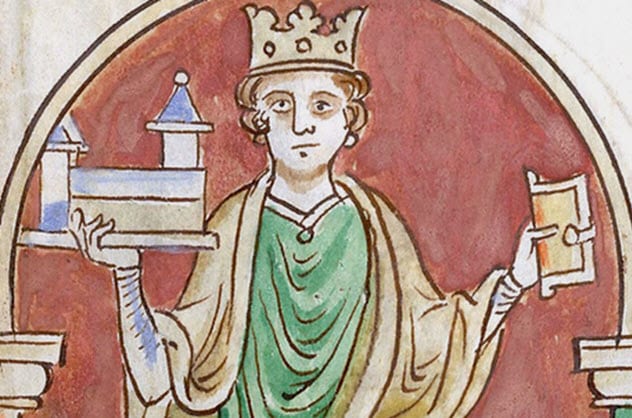
Henry was unlike his brother Rufus in almost every way. Henry’s nickname, Beauclerk, hinted at his learned nature and his knowledge of Latin. When Rufus died in 1100, Henry was on the same hunting trip and his brother Robert was away in the Holy Land. The coincidence has led many historians to accuse Henry of assassination.
As the older brother, Robert felt that he had a greater claim to the throne than Henry and hurried home from the crusade to take the kingdom for himself. To begin with, many of the nobility were on his side, but Henry was able to turn them by issuing the Charter of Liberties, a document which pledged to undo the corrupt practices of his brother and restore law and order to the kingdom.
It also promised to clear any debts or murder charges still facing any nobles who joined Henry, a cunning scheme to persuade them to take his side to avoid their punishments. The Charter of Liberties placed many restrictions on the king and effectively prevented him from interfering in the succession of his vassals at all.
Henry imprisoned Robert for life after capturing him in 1106. With Henry in a much stronger position, he ignored many of the restrictions set out in the Charter of Liberties.
Instead, he was responsible for establishing the most efficient and advanced English state that had been seen up to that point. He made many new royal justices who roamed the countryside ensuring that courts were functioning properly and that all criminals paid their fees to the crown.
He also established the office of the exchequer, which even today manages the income and expenditures of the British state. Henry reformed the currency three times during his reign—in 1107, 1108, and 1125. The first pipe roll, the records that kept track of royal expenditures, was created in 1130.[9]
1 King Constantine II
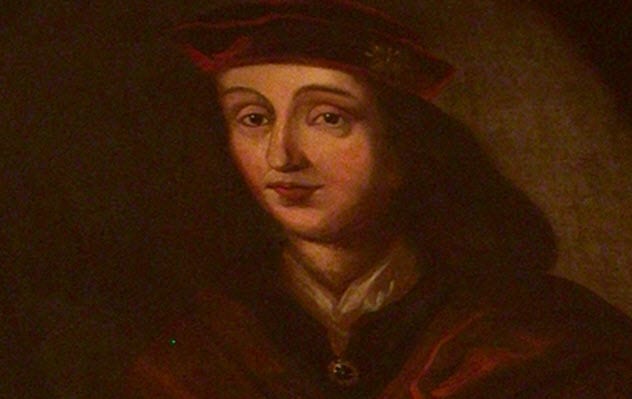
If Kenneth was the first king of a united Scotland, then his grandson Constantine was the king who shaped the country into something we’d recognize as Scotland today. Over the course of his 43-year reign, it went from being called the Kingdom of the Picts to the Kingdom of Alba, the Gaelic word for “Scotland.” The words “Scot” and “Scotland” were first used during his reign.
In the third year of Constantine’s reign, the Vikings returned and pillaged the kingdom. They made it as far as Dunkeld, where they looted many Scottish religious treasures. From then on, Constantine’s main focus seems to have been on defeating the Vikings.
He allied himself with the English for much of his reign, even deigning to visit the court of Athelstan and witness his laws in return for peace and cooperation. In 918, he worked with the Northumbrians. Together, the Scottish and English armies met the Vikings at the Battle of Corbridge.
The most powerful Vikings were the Ui Imair, who had their base in the Hebrides. While the history of the conflict between Constantine and the Ui Imair is shrouded in uncertainty, their influence had faded in the face of a centralized Scotland by the end of Constantine’s rule.
When he was in his sixties, Constantine had been king for so many years that he simply handed the kingdom to his nephew, Malcolm, and lived the rest of his life as the abbot of St. Andrews, dedicating his time to teaching and study. The peaceful succession was a rarity in both Scotland and England at the time and reveals just how successful his efforts to create a peaceful, stable realm had been.[10]
Read more bizarre facts about kings on 10 Viking Kings And Their Epic Deeds and 10 Of The Weirdest Ways Kings And Queens Died.








